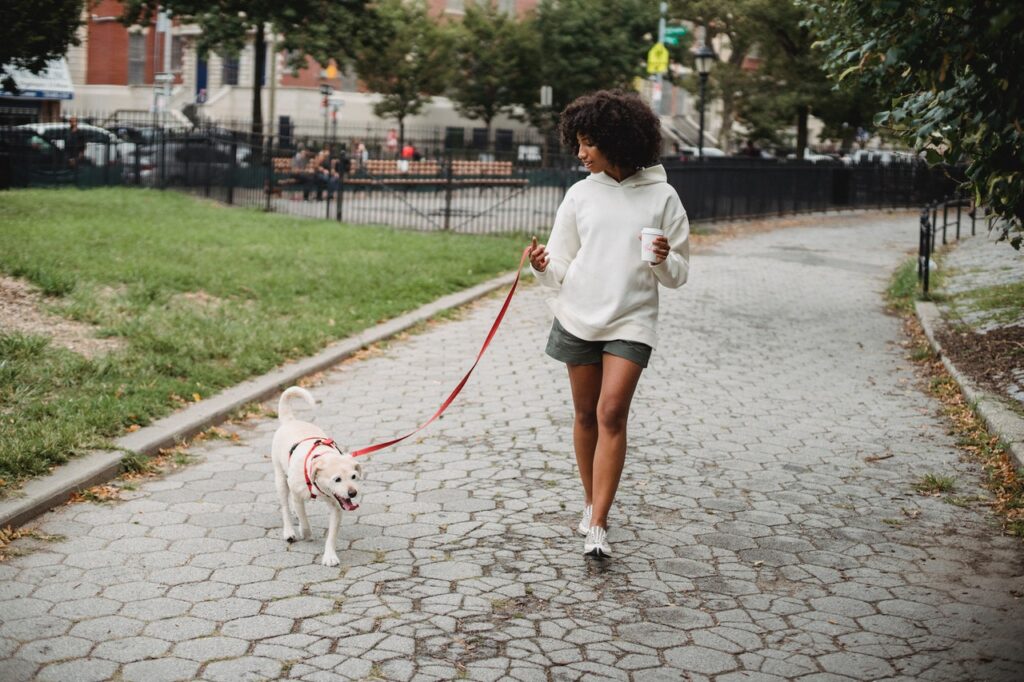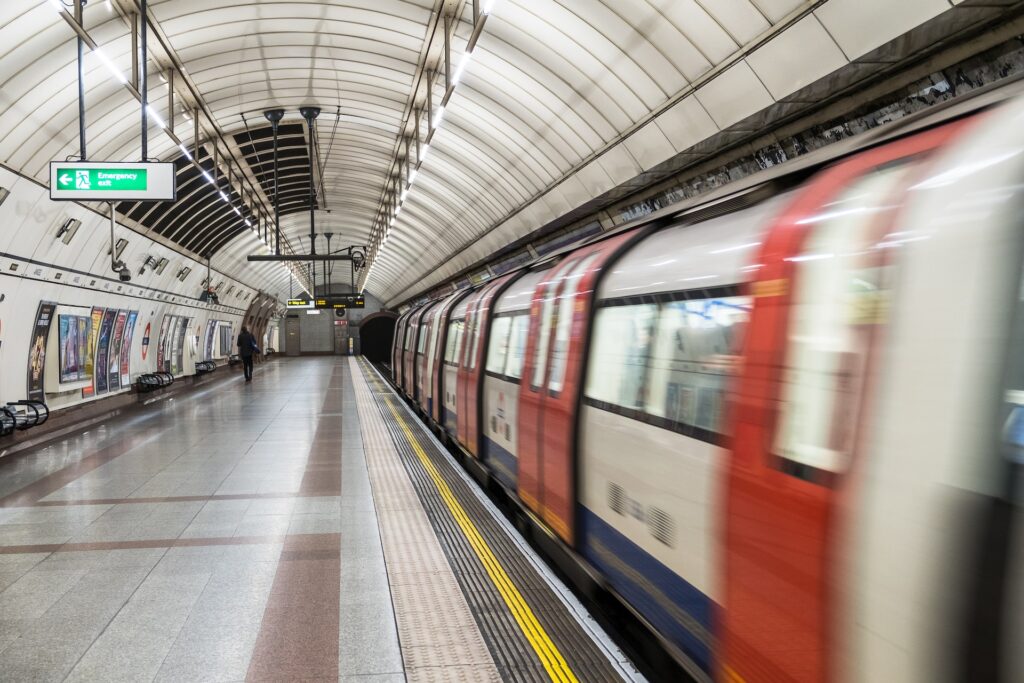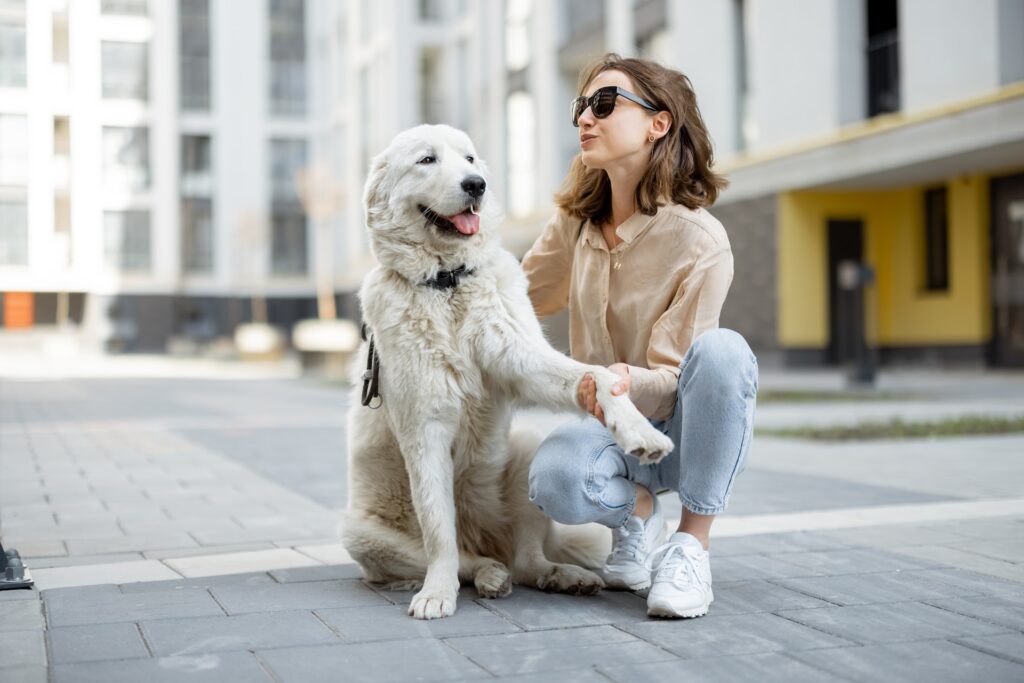The city is no place to bring up a dog. Well, we’re here to tell you that this tired old trope is nonsense. While London can be a challenging and pricey place to raise pets, it has plenty to offer for pet parents and their pooches. From pet-friendly parks, cafes and restaurants with especially designed doggy menus to events that you can attend with your furry friend, living in London with a canine companion can be an exciting and rewarding experience.
That said, owning a pooch in London requires careful planning and consideration to ensure your dog’s well-being and happiness. Here are some top tips to help you navigate the joys and challenges of having a dog in the Big Smoke.
Choose The Right Breed
London is a diverse city with different living environments, from spacious suburban homes to compact city apartments. First and foremost, the breed of dog you choose should match your living conditions and lifestyle. That said, choosing the best dog breed for living in London, or any urban environment, depends on various factors, including the dog’s size, energy level, and temperament. Here are a few breeds that could be a good fit:
- French Bulldog: They are small, easygoing, and don’t require a lot of exercise. They’re also good with people and other dogs, making them great for city living.
- Cavalier King Charles Spaniel: They are known for their adaptable nature. They are comfortable with both quiet homes and bustling city streets. They also don’t require much outdoor exercise.
- Dachshund: These dogs are small and relatively calm indoors. They are good in apartments and small spaces but need regular exercise to stay healthy.
- Shih Tzu: Shih Tzus are a breed that enjoys being indoors. They are friendly and have a calm demeanor.
- Staffordshire Bull Terrier: Despite their medium size, these dogs are generally known to be good in city environments due to their affectionate and friendly nature.
- Poodle: Poodles, whether standard, miniature, or toy, adjust well to all types of environments, and they’re intelligent and easy to train.
Remember, a dog’s breed can dictate some characteristics, but individual personalities will still vary. It is also essential to consider the specific dog’s needs, your lifestyle, and how much time you can dedicate to pet ownership.
Read: 10 small dog breeds with huge personalities

Adjusting Your Dog To City Sounds
If you are moving to London with a dog, then it’s a good idea to desensitise your dog to city sounds ahead of time. London can be a loud place and it’s common to hear police sirens and fire engines go by numerous times a day. To adjust the noises that go hand-in-hand with London’s fast paced life, play them sounds of the city on you tube while they play and eat. Gradually turn up the volume over a period of time so they won’t be spooked by a loud noise when they hear it.
Be Aware Of The Public Spaces Protection Orders
Many London boroughs have Public Spaces Protection Orders (PSPOs) which means you have to:
- Put your dog on a lead if told to by a police officer, police community support officer or someone from the council
- Stop your dog going to certain places – like farmland or parts of a park
- Limit the number of dogs you have with you (this applies to professional dog walkers too)
- Clear up after your dog
- Carry a poop scoop and disposable bags
If you ignore a PSPO, you can be fined £100 on the spot (a ‘Fixed Penalty Notice’) and up to £1,000 if it goes to court.
Read: Smart ways to save money on pet care as the cost of living rises
Choose The Right Lead
When it comes to walking your dog in the London’s parks (more on that in a moment), a dog harness gives you better control on walks and is generally considered a more comfortable option, especially for dogs that pull on the leash.
Don’t go for a retractable leash in the city as they are likely to cause an injury in a busy, urban environment. Instead, use a four to six foot leash, no longer. In London, where there are there are people walking, people on bicycles, and cars you’ll want to be able to control your dog and keep them close, and a shorter leash will allow this.

Make Use Of London’s Parks
London is known for its beautiful parks and green spaces, many of which are ideal for dog walking. Moreover they are the ideal place to socialise with friends over a picnic, because, although lots of London restaurants are dog friendly, there’s no better place for a pooch to play in London than one of it’s parks. Here are some of our favourite London parks for doggies:
- Hyde Park: This is one of the largest parks in London, offering plenty of open space for dogs to run and play. It’s a very popular spot for dog walkers, so your pup will have the chance to socialise with other dogs.
- Regent’s Park: This centrally-located park has gorgeous gardens and wide open spaces, plus it’s home to the London Zoo. Dogs must be kept on a lead in some areas, but there are plenty of dog-friendly spots as well.
- Hampstead Heath: Hampstead Heath is a bit wilder than some of the other parks on this list, offering woodland trails and even a swimming pond for dogs. It’s a great place for a long, adventurous walk.
- Richmond Park: As the largest of London’s eight Royal Parks, Richmond Park is a great place for a long walk. It’s also a National Nature Reserve, and dogs are welcome, provided they’re under control.
- Greenwich Park: This park offers fantastic views over the city and plenty of walking trails. It’s also home to the Prime Meridian Line and the Royal Observatory.
- Victoria Park: Known as the ‘People’s Park’, it offers beautiful, nearby canals, ponds and pavilions. Dogs are welcomed but are required to be on a lead in some areas of the park.
- Battersea Park: A popular spot for dog walkers along the Thames, this park features a dog-friendly boating lake, an art gallery, and plenty of open spaces.
Use Public Transport Wisely
London’s public transport is generally dog-friendly; dogs are allowed on the Tube, buses, and the DRL line at no extra charge, but they must be kept on a lead. During peak hours, it can be stressful for your pet due to crowded spaces and noise, so try to travel during off-peak times when possible.
Prior to taking your dog on public transport, it might be a good idea to familiarise them with the noises, movement and hustle that comes with London’s extensive travel system. When you use the underground for the first time with your dog, start by bringing them down on the platform to watch the tubes go by. Then move onto short journeys, just a couple of stops away. If you’re going to be bringing a smaller dog breed on the underground frequently, you’ll need to carry them in a dog bag.
Some more top tips for traveling with a dog in London include:
Keep Your Dog Leashed: Keep your dog on a short leash at all times to prevent them wandering off or causing discomfort to others. As mentioned, don’t use a retractable dog leash.
Off-Peak Travel: If possible, travel at off-peak times when the public transport is less crowded. This would be less stressful for both you and your dog.
Follow Local Rules: In London, dogs are allowed on the Tube, buses, trams and DLR (Docklands Light Railway), but they must be kept on a lead or in a closed container. On the Tube, dogs are not allowed on escalators for their own safety and must be carried or use the lift/elevator.
Keep Your Dog Comfortable: Be attentive to your dog’s comfort. Bring water for your dog, especially if you’re traveling during the summer. London’s underground is known for getting pretty warm and uncomfortable when the weather heats up. As City Monitor highlights, in July and August the average tube temperature can be over 29 degrees. Moreover, the average temperature on the ‘deep level lines’ which include Bakerloo, Central, Jubilee, Northern, Piccadilly, Victoria, and Waterloo and City can surpass 20 degrees.
Keep Your Dog Near You: Don’t allow your dog to occupy a seat, especially during peak times. It’s both considerate to other passengers and safer for your pet.
Be Respectful: Be aware that not everyone is comfortable around dogs. Keep your pet as quiet and calm as possible, and be ready to move if someone near you is allergic or scared.

Explore London’s Dog Friendly Restaurants & Bars
One of the pleasures of London is eating out at restaurants, and for dog owners, somewhere their pooch can happily catch crumbs under the table and lap up all the attention they get from other dog lovers is gold.
It can be tricky to track down restaurants that allow canines. Moreover, restaurants that happily host canines are often even harder to find, but, yes, they do exist. Some of our favourite pooch-friendly places that take the term “dog friendly” to a whole new level with dedicated mutt-made menus include:
- Pawsitive Cafe: This Notting Hill spot is a real treat for dogs. Not only does it serve food for humans and food for dogs, it has a doggy play area which includes a ball pit, a swing, and a slide. Once your canine companions catches whiff of the beef steak on the doggy menu, they will be dragging you back by the lead every week for a doggy date.
- Megan’s: All of this popular London restaurant chain are completely dog friendly inside and outside. They are currently working on a doggy menu…updates to follow.
- Shake Shack: Shake Shack in Covent Garden has a dog menu, serving doggie treats like the ‘Pooch-ini’.

Dog Friendly Events London
London is awash with events designed specifically for you and your pooch. Whether it’s dog yoga, a dog-friendly cinema or meet-up in the park, if it’s an event for our four-legged friends the website thedogvine.com should be your got-to resource. Billed as the ‘Timeout for London Dogs’, this blog features a dedicated London dog events calendar and has a growing London dog-friendly directory dedicated to London dog-friendly cafes & restaurants.
Consider A Dog Walker Or Sitter
Dog walking and pet sitting London is big business, with an estimated part-time salary of around £26’000 on the table, according to Indeed. With such attractive earnings to be made, it’s pretty easy to find a reliable dog walker in the city.
The app borrowmydoggy.com is an excellent resource for Londoners. The service connects dog owners with trustworthy individuals who are willing to look after dogs for free or at a minimal cost. It provides an alternative to expensive dog boarding or dog walking services, allowing you to save money on dog care, which in London is a by know means an easy feat.
Moreover, it’s a great way to make connections with like-minded dog lovers and many people report making close friends through the app. Rover, the world’s largest network of dog walkers and pet sitters, is also a useful app for London dog owners.
Keep Your Dog Safe
Finally, always keep your dog’s safety in mind. The Metropolitan Police recorded 600 dog thefts in 2024 and as reported by the London Evening Standard “dog owners in London are most likely to have their pet stolen, with the capital recording the most thefts in the UK for the eighth year in a row.”
Make sure they’re microchipped and that the information is up-to-date. It’s also a good idea to have a tag on their collar with your contact details. This is especially important in a busy city like London, where the risk of losing your pet can be higher than in the countryside.
The Bottom Line
Having a dog in London can be a wonderful experience if you’re prepared and informed. With the right care, consideration, and plenty of love, your four-legged friend will thrive in this vibrant city. We can’t wait to bump into you and your dog soon!





